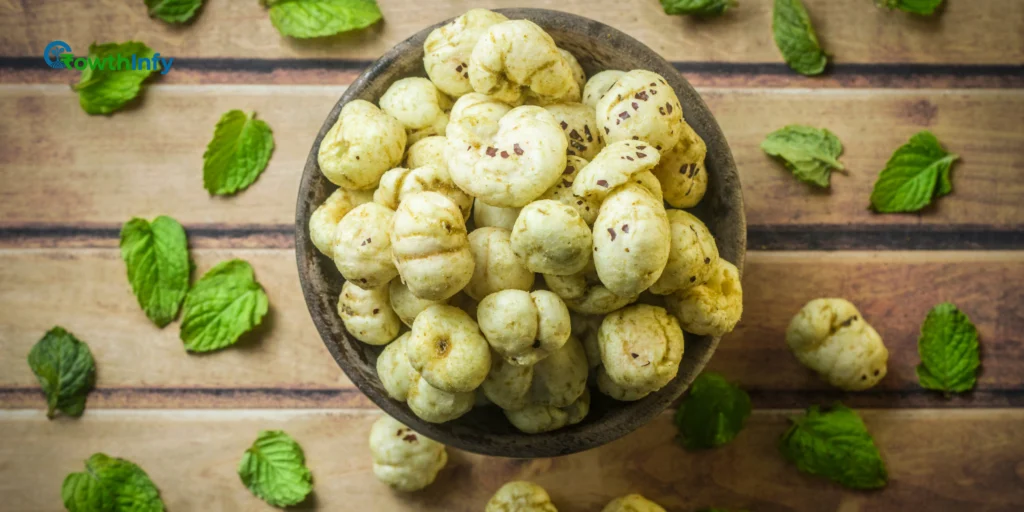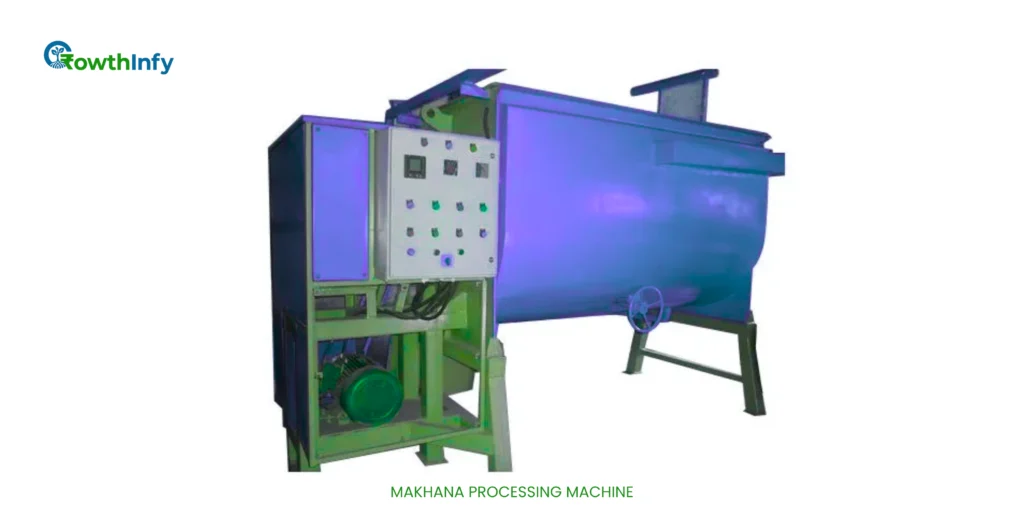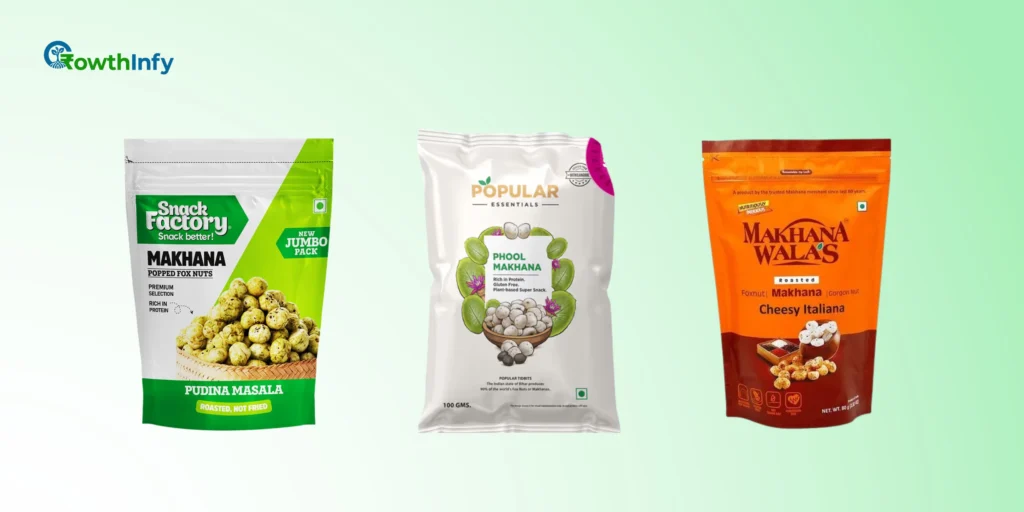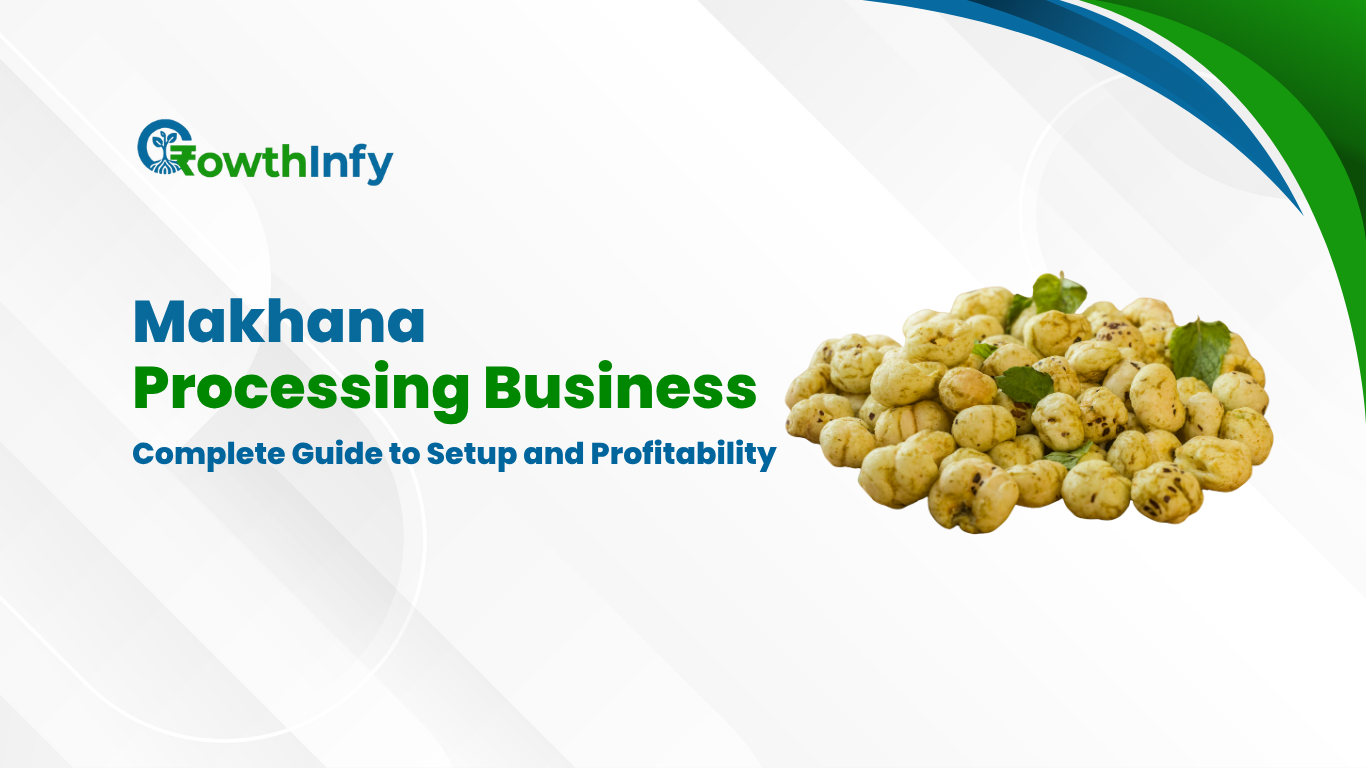Makhana Processing Business: Complete Guide to Setup and Profitability
Makhana, which is also known as fox nuts, or lotus seeds, is now considered a superfood and has become a hit among health-conscious customers in both India and other parts of the world. The high nutritional value of makhana, its low-calorie profile, and the gluten-free nature of the seeds have caused a sudden uptick in demand for it. Starting a makhana processing business in India offers entrepreneurs a rare opportunity to take advantage of a developing market, especially in Bihar, the main producer of makhana, where the state produces more than 90% of makhana in India. This complete guide provides detailed information to set up a makhana business, from plant to profitability, with a focus on the Indian audience.
Why Choose a Makhana Processing Business?
The Makhana business in India is propelled by the demand for better-for-you snacks. As a nutritious and wholesome food containing protein, fiber, calcium and antioxidants; makhana is a popular alternative snack food for active individuals, who want guilt-free snacking options. The super food market is expected to see tremendous growth globally, as evidenced by the uptick in makhana exports to developed nations such as the USA, UK, and UAE. Makhana production in India is estimated at 40,000 Metric tons, with a five year expected compounded annual growth rate at 12.5 percent; the makhana processing business and sales opportunity is enticing.
Bihar’s Mithilanchal role in makhana growing is unsurpassed, and its supply of raw materials is easily accessible and inexpensive. The potential for makhana is across the board, from snacks to kheer to cosmetics, enhancing the profile of the market potential. Demand is there, now time for the entrepreneur to establish its processing unit with further value-added products such as flavored makhana, chips or namkeens.

Steps to Start a Makhana Processing Business in India
1.Market Research and Business Planning
Before starting the makhana business, it is important to conduct extensive market research first. You should know your target market – are you selling to health conscious consumers, retailers, or even exporters? Assess competitors, their prices, and consumer preferences for flavours such as peri-peri, masala or even caramel. A makhana business plan should clearly define your budget, target market, and marketing strategy.
2. Choose a Business Model
You can choose from one of the three models:
- Cultivation and Processing Model: You grow and cultivate makhana in a pond or wetland area and then process it into finished products. This would require skills and knowledge of farming and a sizable investment in land and equipment.
- Processing Only Model: You get raw makhana seeds from farmers and process the makhana, which involves cleaning, roasting and packing. This would be less capital-intensive, and easier for beginners.
- Distribution and Retail Model: You buy processed makhana and sell this processed product directly to the consumer retail outlets, or through Amazon, Flipkart and other online platforms.
3. Legal Requirements and Registrations
To set up a makhana processing business , be sure to follow the legal requirements below.
- Business Registration: You will need to register your business as a sole proprietorship, partnership or a private limited company.
- FSSAI License: For compliance with food safety requirements, you need to obtain an FSSAI License from the Food Safety and Standards Authority of India.
- GST Registration: This is important for tax purposes.
- IEC Code: If you are looking or may be looking to export products in the future, you need to obtain this from the Directorate General of Foreign Trade.
- APEDA Registration: To export food products and receive government support and incentives you will need to register with APEDA.
4-Setting Up the Processing Unit
The machine setup required of a typical makhana processing unit is specialized as follows:
- Roasting Machines: Responsible for roasting the makhana with uniformity and giving the makhana a consistent texture.
- Popping Machines: For popping the makhana seeds into their final signature enticing taste and light, crunchy feel.
- Sorting and Grading Machines: For sorting and grading the makhana seeds by size and quality, allowing for better sales price.
- Packaging Machines: The usage of nitrogen gas vacuum packaging allows makhana to last longer on a shelf and under normal storage conditions.
You will see a startup cost between ₹5-10 lakh depending the size and capability of machinery you selected for the small unit. Buying raw makhana from the state of Bihar at a cost of ₹400.00 to ₹800.00/kg is easy and efficient.
 5.Processing Steps
5.Processing Steps
There are several stages to the makhana processing business:
- Harvesting: Makhana seeds are harvested from the lotus plant which grows in ponds that are typically harvested between February to September;
- Drying: Most likely (sun) dried, they are dried out to remove moisture from the seeds before roasting. And is an important part of the roasting process to ensure proper seating quality;
- Roasting and Popping: Seeds can be roasted in clay ovens or machines with appropriate oils. The seeds are then popped either manually with a wooden mallet or with an automatic popping process;
- Sorting and Grading: the seeds will then be graded normally by size and possibly other factors (ex. water content) to allow for better pricing;
- Flavoring and Packaging: Add flavors masala or cheese etc. and pack into resealable, environmentally friendly pouches to freeze/ vacuum pack to maintain freshness.
6. Branding and Marketing
Effective branding will distinguish your makhana buisness from the rest. Highlight the health benefits of makhana, such as being gluten-free and low-calorie, in packaging. Consider designing attractive and sustainable packaging to attract eco-friendly consumers. Digital platforms like Instagram, Amazon, and TikTok are great avenues for marketing. In addition to social media, think about using influencer marketing to promote your product.
Investment and Profitability
Investment Breakdown
Total investment for a small-scale makhana processing business ranges from ₹5-15 lakh.
- Machinery: ₹3-7 lakh for roasting, popping, and packaging machinery
- Raw materials: ₹400-800 per kg for raw makhana seeds
- Infrastructure: ₹1-2 lakh for small processing plant setup
- Licenses and Certifications: ₹50,000-1 lakh (approx.) for FSSAI, GST, APEDA
- Marketing and Branding: ₹50,000-1 lakh (approx.) for launches, campaigns etc.
Profit Margins
The processed makhana is sold at ₹800-1500 per kg and offers profit in the range of 20-40%. Processing raw makhana of 100 kg (cost ₹40000–80000) will give you ₹80000–150000 worth of sales. Exports are on the rise and will provide you higher profits selling to international markets. The makhana market in India was worth INR 8.5 billion in 2024; it is expected to reach INR 19.6 billion in 2033, growing at a CAGR of 9.22%.
Challenges in the Makhana Business
- Quality Control: Maintaining consistent size, flavor, and texture is crucial for consumer trust.
- Supply Chain Issues: Seasonal availability of raw makhana can disrupt supply.
- Competition: Increasing popularity means rising competition, making branding critical.
- Labor-Intensive Process: Traditional processing methods are time-consuming, necessitating investment in automation.
Solutions include adopting modern machinery, partnering with local farmers for a steady supply, and obtaining certifications like FSSAI and GI tags for credibility.

Government Support and Incentives
The Indian government is assisting the makhana sector in India through a number of schemes.
- Makhana Board: Announced in the 2025-26 Union Budget, it will be established to increase production, processing, and marketing of Makhana in Bihar.
- APEDA Incentives: Provides an export subsidy, and exporter courses for makhana exporters.
- Bihar Government Schemes: Stamp duty waivers, rebates, and single window clearance for agricultural business.
- SFURTI Scheme: Subsidisation, and technological improvement of Makhana processing clusters.
Export Opportunities
With global demand and a long shelf life, makhana is perfect for export. In 2023-24 India exported 25,130 metric tons of makhana, with major markets in the USA, Canada, and Australia. Get the right certifications such as HACCP and obtain GI tags where possible (for instance, Mithila Makhana) to align with international standards. You can also work with agencies like APEDA or Daak Ghar Niryat Kendra to simplify the process of export.
Tips for Success in the Makhana Business
- Experiment with Flavors: Offer customers some unique options such as chocolate or peri-peri to target younger consumers.
- Prioritize Quality: Ongoing testing and certification will make consumers excited and trust your product.
- Use Ecommerce: Sell on platforms like Amazon, Flipkart or your own website.
- Engage with Farmers: Create a good relationship with makhana farmers in Bihar, this will offer stability for reliable supply.
Conclusion
With increasing awareness about healthy food among people, setting up a makhana processing unit can be a great option for new entrepreneurs.
Whichever is your method of processing, selling, or exporting makhana, a clear and functional business plan can benefit you in earning good profits. Begin by conducting proper research, investing in quality machines, and taking the help of online marketing to reach out to more customers




